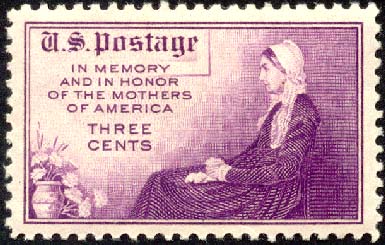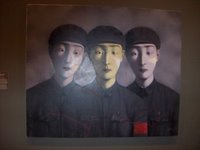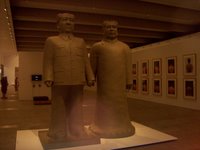 Brisbanites flocked to the GOMA this weekend to catch the last two days of the much talked about Ron Mueck exhibition which has been touring Australia. I went along on Saturday morning to check out the hype. There was a long queue outside the venue but it moved quickly in the pleasant sunshine and I was inside admiring Mueck’s work within a half hour of arrival. It didn’t take long to see what the fuss was about. There were only a dozen or so of his works on display but each was intensely enthralling and engaging.
Brisbanites flocked to the GOMA this weekend to catch the last two days of the much talked about Ron Mueck exhibition which has been touring Australia. I went along on Saturday morning to check out the hype. There was a long queue outside the venue but it moved quickly in the pleasant sunshine and I was inside admiring Mueck’s work within a half hour of arrival. It didn’t take long to see what the fuss was about. There were only a dozen or so of his works on display but each was intensely enthralling and engaging.Ron Mueck is a Melbourne-born hyperrealist who seeks extreme verisimilitude with his work. His extraordinary detailed high resolution works had the audience constantly snapping on their cameras and phones. His early career was as a model maker and puppeteer for children's television and films. He then established his own company in London, making photo-realistic props and animatronics for the advertising industry.
Mueck is married to scriptwriter Caroline Willing, the daughter of artist Paula Rego. Rego watched Mueck created a giant sand sculpture of a dragon for his two young daughters on the beach. When she was working on drawings for a show at London's Hayward Gallery, she asked him to draw a Pinocchio. Mueck created a metre-tall, ultra-realist Pinocchio, wearing only undies and an embarrassed expression.
Rego put Mueck in the path of a professional artistic career. Mueck gets incredibly convincing detail through the meticulous use of polyester resins and multiple moulds. His works demand to be seen close-up so people can inspect the hairs, freckles and blemishes and scrutinise the peculiar expressions his subjects have. Whether the look represents fear, shock or yearning they are always drawn with sympathy and extraordinary care.
No more so than the first work in the GOMA exhibition Dead Dad (1996–97), commemorating the death of Mueck's father through a smaller than life-size sculpture. Though diminutive, the touching naked portrait of his own dead dad made of silicone, acrylic paint and his own human hair manages to cast a spell on the crowd it kept for the entire exhibition. It was Dead Dad that first brought Mueck to world attention at the 1997-1998 Sensation exhibition of Young British Artists in London, Berlin and New York (but notably rejected by prudish Australia) which featured the work of Damien Hirst and Tracey Emin among others.
The second GOMA work goes the opposite route to Dead Dad in terms of sex, size and age. This is the five metre long 2006 sculpture “A Girl” of a just-born infant complete with smears of blood and a dangling umbilical cord. If Dead Dad forces us to contemplate the mystery of death it is this intensely over-alive newborn daughter that screams (or is about to) with the possibilities of life.
Wild Man (2005) is also naked, but unlike Dead Dad is very much alive. Wild Man is three metres high and is complete with long hair and unkempt beard. He sits nervously clutching his stool with his feet raised in a slightly fearful expression. His eyes stare off to some unknown danger to the right. Has he been caught out or was he threatened? A similar puzzle confronts us with the two old ladies ("Two Women" 2005) who Mueck portrays gossiping to each other. One looks away from the other towards the audience as if slyly aware of their eavesdropping.
This sense of invading personal space is also keen felt with the giant woman “In Bed” (2005) covered by an enormous white doona with her knees raised under the blanket (picture from Wikipedia above). Her right hand is raised to her face is quiet contemplation perhaps of a missing partner. By contrast the Still Life (2009) of a slaughtered and plucked giant chicken lacks the nuance and therefore interest of his human pieces.
I quickly drifted to Drift (2009) another puzzling human piece though not as intriguing as his earlier works. A man in his thirties or forties lies on a sunbed or inflatable raft his eyes covered by dark sunglasses. He wears board shorts and expensive jewellery but is emotionless and probably asleep. With the raft hanging from the wall, his outstretched hands create the impression of a crucifixion, but it is hard to care why he is drifting. A better recent work is Youth (2009), a black teenager who lifts his bloodied white t-shirt to examine with horror what looks like a deep knife wound to the stomach. The piece is only 65cms high but Mueck takes us into another of his dark, dangerous worlds as we attempt to craft on the backstory.
This perhaps is why Ron Mueck is so successful. Despite his often grand canvasses and hyperrealism, he leaves ample room for the viewers to impose their own imagination on the works. Here is a great original talent who deservedly gains popular acclaim to go with the critical stuff.






















